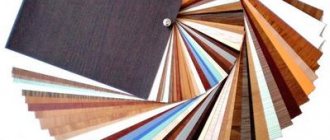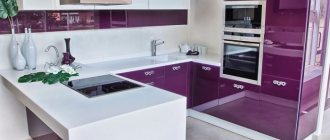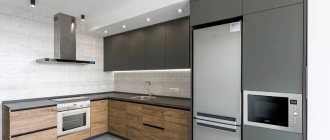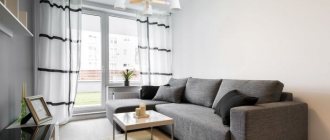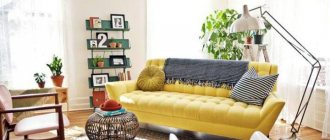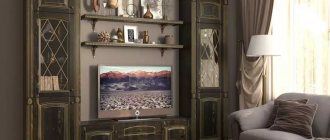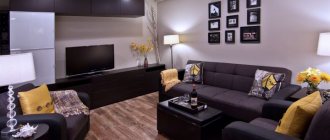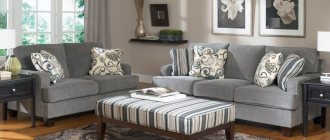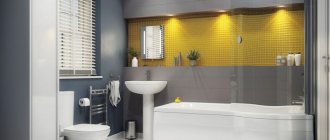Film facades are a popular modern solution for the front decoration of furniture: they are economical, varied in color, and allow you to imitate various surfaces. But sometimes buyers have distrust in the quality and durability of such furniture. Many people have the impression that these facades are covered with ordinary film, which can be bought at construction or hardware stores. To understand this mistake, you need to take a closer look at the production technology of film facades and their characteristics.
What are film facades? Production of facades with PVC film
Film facades are manufactured using modern technologies based on MDF boards (medium density fiberboard). In terms of their parameters, these boards are close to natural wood, but much stronger. They are non-toxic, do not emit harmful substances, and are environmentally friendly. An important property of MDF boards is that they practically do not absorb moisture.
Traditionally, shaped milling is applied to the facade of the slab using modern high-precision machines, ensuring the quality and clarity of the design. When making custom-made furniture, the design can be made according to the customer’s sketches.
The next technological stage in the production of film facades is the application of PVC film to the prepared elements. Film is a very durable material. Usually it has a thickness of 0.3-0.5 mm. When heated, it becomes plastic. It is this property of the film that is used when it is applied to facades using thermal vacuum pressing. In this case, the film lies evenly on the surface of the slab, easily filling all the milling recesses, and after cooling it retains its shape, holds firmly and for a long time.
The variety of patterns of PVC film is ensured by the fact that it accepts printing patterns well and is easy to emboss and dye.
Therefore, the film can be glossy, semi-matte, matte, pearlescent, with a metallic sheen, imitating various wood species, marble, leather, textiles and other materials. In addition, the film can be patinated and varnished.
Such a variety of designs allows you to use furniture with film fronts in any room, with any interior: warm solid colors are suitable for the bedroom, marble or enamel film for the kitchen, wood-look for the living room.
Of course, all the positive properties of film facades are preserved only with strict adherence to manufacturing and storage technology. If the product is manufactured using outdated equipment, in violation of the conditions of production, storage and transportation, there can be no question of quality: the film quickly peels off and loses color. Therefore, it is very important to purchase products from more or less well-known manufacturers that have proven themselves well in the local or national market.
Main types of milling
| Fig.1 |
|
| rice. 4 |
|
| rice. 6 |
|
|
|
|
| Fig.12 | rice. 13 |
|
|
| rice. 16 |
|
|
|
|
|
|
|
|
|
| rice. 27 |
| Fig.29 |
|
|
|
|
| rice. 35 |
|
| rice. 38 |
|
|
|
| rice. 43 |
|
|
Advantages of film facades
The main advantage of film facades is their price. Furniture with them is relatively inexpensive compared to some other finishing options. Film facades have other advantages:
- a huge variety of colors and textures;
- durability;
- resistance to abrasion and cleaning agents;
- the ability to manufacture custom products of any size, shape, for example, curly, bent, etc.;
- high light resistance (to UV rays);
- environmental Safety;
- ease of care.
Whatever furniture you come up with for yourself, your plans can be realized with the help of film facades.
New milling
| rice. 46 façade/corner | rice. 47 façade/corner | ||
| rice. 48 façade/corner | rice. 49 façade/corner | ||
| rice. 50 façade/corner | rice. 51 façade/corner | ||
| rice. 52 façade/corner | rice. 53 façade/corner | ||
| rice. 54 | rice. 55 | rice. 56 | |
| rice. 57 façade/corner | rice. 58 façade/corner | ||
| rice. 59 façade/corner | rice. 60 façade/corner | ||
| rice. 61 façade/corner | rice. 62 façade/corner | ||
| rice. 63 façade/corner | rice. 64 façade/corner | ||
| rice. 65 façade/corner | rice. 66 façade/corner | ||
| rice. 67 façade/corner | rice. 68 façade/corner | ||
| rice. 69 façade/corner | rice. 70 façade/corner | ||
Disadvantages of film facades
Film facades also have disadvantages:
- peeling of the film under the influence of high temperatures and humidity;
- possibility of damage due to external chemical, mechanical influences, or the use of abrasive cleaning agents;
- impossibility of restoration of defects.
Manufacturers of kitchens with film facades strongly recommend purchasing a good hood - it extends the life of the cabinet facades located above the hob.
If the appearance of the film facades suffers greatly, you can always order new ones. Fortunately, their price is low. It is not necessary to change the furniture frames - you can only update the facades. If the facades are made from reliable, consistent manufacturers, you can re-order one or two elements from them at any time to replace the damaged ones.
Differences
Distinctive features:
- You cannot create relief on plastic. Milling is often done on the film.
- Plastic products have a wider range of colors and can be created to order.
- MDF film is less practical.
- Plastic is stronger.
- MDF products with a protective film layer have a lower price.
- Plastic coatings are more resistant to the negative effects of water, humidity and high temperature.
- The film is easily applied to surfaces of any shape (straight, curved, corner). Plastic is not suitable for the design of shaped parts; it can lose strength parameters when making complex elements.
- Film coating is less durable. Its service life is limited to six years. Plastic products can retain their original properties for about 25 years.
- Plastic products have more positive reviews.
- Plastic is more wear-resistant.
- The color gamut is wider for film coating.
- Plastic facades look more stylish and bright.
- Facades lined with plastic can be restored if defects appear.
Film, enamel or plastic - which is better?
Along with film finishing, enamel, acrylic or plastic coating is popular. At first glance, it is difficult for an uninformed buyer to determine the material used for the manufacture of furniture facades. How is film different from plastic and enamel? Which is better to choose? To answer these questions, you need to know the main features of these materials.
Plastic MDF facades. Plastic coverings of facades have a bright glossy surface. Such facades are resistant to mechanical damage, do not deform from exposure to moisture or high temperature, and do not fade in the sun. The colors are varied, but the palette is not as wide as that of film . Plastic facades are perfect for kitchens, bathrooms or hallways. The disadvantages include the higher cost compared to film facades, as well as the fact that handprints are clearly visible on the plastic. Restoration, as in the case of film, is impossible.
Acrylic facades. Coating furniture facades with acrylic is a new technology for us. This process is quite complicated, so furniture with acrylic fronts cannot be called cheap. Acrylic has an even smoother and glossier surface than plastic. This can be considered both an advantage and a disadvantage: the excessive shine of furniture, although beautiful, can be very tiring, and fingerprints will also have to be removed. Acrylic is environmentally friendly and does not contain harmful impurities. It is much more resistant to mechanical damage than plastic or film. Bright, rich color does not fade over time and does not fade in the sun. But acrylic facades cannot boast of a variety of shapes : they are only dull and even. If you need furniture of more complex shapes, you will have to make a choice in favor of film or painted facades.
MDF facades covered with enamel. Painted facades (enamel) can cause confusion among uninformed buyers: they are just painted, why are they so expensive? The fact is that coating MDF with enamel is a technologically complex, multi-stage process. First, the surface of the slab is primed, then enamel is applied in several layers, thoroughly drying each of them. After this, the paint layer is sanded, varnished and polished. The result is an environmentally friendly product that is resistant to light and minor mechanical damage. The main advantages of enamel facades are the ability to restore a scratched surface (and this is a big plus compared to film!), a huge variety of color palettes (more than 700 colors!) and special effects (metallic, chameleon, mother-of-pearl, galaxy, pearl, etc.). There are four main textures: high gloss, gloss, matte, abrasive surfaces. Disadvantages include the high price and, again, hand marks.
Film, plastic or painting: which is better? Which furniture to choose depends on the buyer’s priorities. If you need special strength, brightness and durability and there is no need to strictly save money when ordering, plastic or acrylic will do. Enamel facades are chosen by those for whom price is not important, but who require, for example, unusual colors or special resistance to sunlight. If you have a small budget, you should pay attention to high-quality, fairly durable and easy-to-care furniture with film fronts. The difference in price between enamel and film can be quite significant, amounting to tens of thousands of rubles, if, for example, furniture for a large kitchen is ordered.
Features of caring for film facades
Caring for film facades is really easy. They should be wiped regularly with a damp soft cloth and any non-aggressive liquid detergent.
In order for furniture facades with PVC film to serve for a long time without losing their performance properties, it is recommended to follow a few simple rules:
- do not expose furniture to heat above 70°, do not place it near an electric stove, heaters,
- lighting fixtures, etc., to avoid film peeling;
- do not expose film facades to cooling below -15°, prolonged exposure to moisture or strong mechanical stress;
- Do not use abrasive, aggressive agents, solvents or liquids containing chlorine to clean facades.
If you treat furniture with film fronts with care, it will delight its owners for a long time with its bright colors and smooth surface.
Author: Alla Dobrokhotova
Showcases
| to figure 1,7,11,13,14,18, 27,28,31-36 |
| to Figure 3, 38 |
| to Figure 5, 40 |
| to Figure 6, 41 |
|
|
| to Figure 12 |
| to Figure 15 | to Figure 16 | to Figure 17 |
|
|
|
| to Figure 23 |
|
|
| to Figure 26 |
|
|
|
